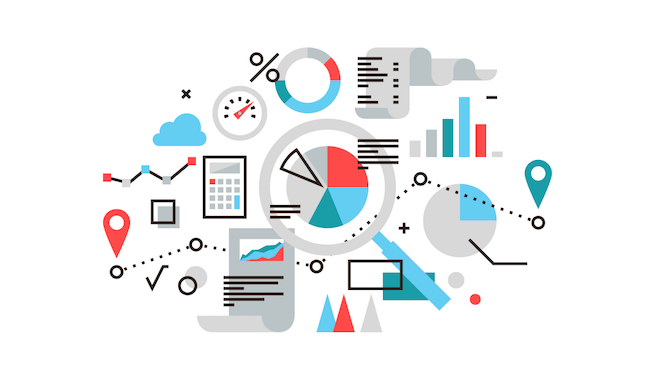

Are you leveraging retailer data to hone in on local opportunities and optimize for success? If not, you’re not alone. The reality is that most brands have limited access to retailer data, leaving a wealth of local marketing opportunity on the table.
Perhaps you’re utilizing something like a digital asset management platform (known for a lack of meaningful tracking or insights). Perhaps you’re stuck manually pulling some piece of information or another through your sales reps.
Based upon client case studies, here are five ways that leading brands across industries are utilizing retailer data and striking gold:
Your content can only be successful if you learn from mistakes and wins. With access to retailer data, you can begin to see what’s working and what isn’t with both your retailers and your local audiences.
[Tweet “Your content can only be successful if you learn from mistakes and wins.”]
What types of content do your retailers like promoting? How are they customizing it for their customers? What kinds of content perform best on their digital channels and in different local markets? Once you begin digging into the performance of your content, you can begin to optimize for maximum success, engaging retailers and appealing to a wider net of local customers.
Trek Bikes previously shared content that positioned itself as a high-performance brand sponsoring athletes that push themselves to the limits. Retailer feedback indicated that their consumers prefer to see people enjoying their bikes, popping wheelies, and not suffering through that last sprint! Trek’s content has since shifted more towards the first five miles rather than the last.
Here is an example of Trek Bikes’ Trek Fest campaign as promoted by one of their retailers through Promoboxx:
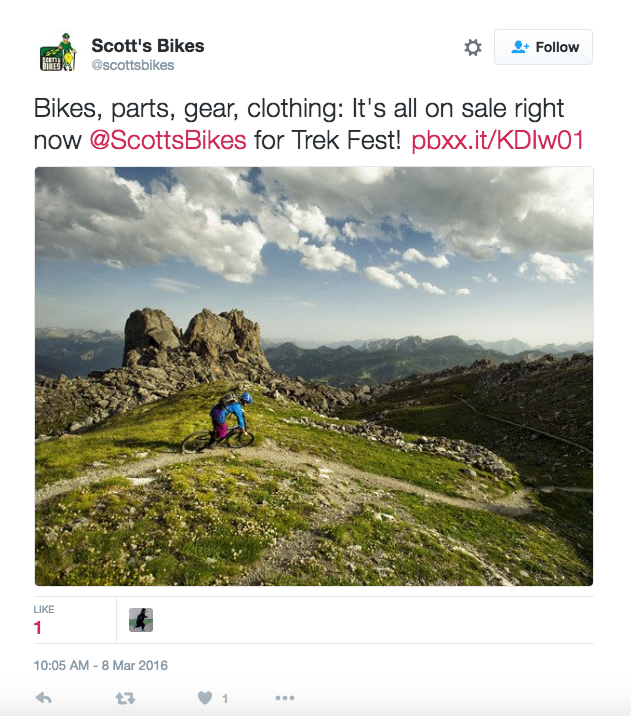

Example co-branded Twitter share
Related content: 5 Steps to Kicking Off Successful Brand Initiatives with Retailers >
Without accurate retailer data, there’s no way of really knowing if your programs and campaigns are successful locally.
Start pulling insights into your retailers’ local campaigns on digital channels like Facebook, and you’ll find an abundance of valuable data, from the success of organic versus paid campaigns to the overall local reach of your retailers.
[Tweet “Without retailer data, there’s no way of knowing if your programs and campaigns are successful.”]
You can also begin to identify program and campaign success by region. By doing so, you can talk to your regional sales reps and find out what actions were taken to nurture this success. From there, you can all begin to establish best practices.
Denise Anderson, Digital Marketing Manager (Wholesale) at SmartWool, recently shared her thoughts on all of the metrics now available to her and her team through Promoboxx:
“Before, it was really hard to quantify our efforts, so all of the visibility we now have through Promoboxx is very exciting.”
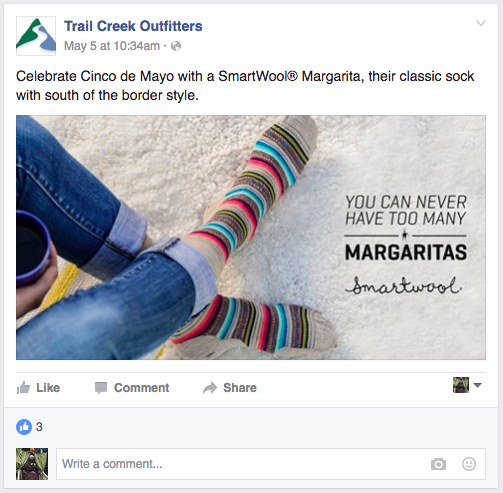

Example co-branded Facebook share
On Cinco de Mayo, SmartWool pushed out a quick “You can never have too many margaritas” campaign through Promoboxx for their margarita sock. They could instantly see that twenty of their dealers shared the content out on social channels. Before Promoboxx, SmartWool utilized a digital asset management portal that offered no such insights.
For a brand’s Sales and Marketing teams, knowing which retailers are really supporting the brand message is a valuable piece of information. Why? It offers them an opportunity to discover why their content and programs may be resonating with some retailers and not with others.
With access to retailer data, you can begin to pinpoint where improvements can be made with your relationships, your content, and your programs as a whole.
Before partnering with Promoboxx, Tom Taylor (Head of US Run Specialty Channel Marketing at New Balance) recently shared with us that New Balance had limited insights into all of their retail accounts. When launching on Promoboxx, though, they could immediately view retailer activity on a live stream. Here’s what he had to say:
“When we went live on Promoboxx, we just watched the retailer activity stream. We immediately saw retailers that we had never even seen before. Every day, we watched as all of these retailers across the country got on board without questions, comments, or handholding. It was fantastic.”
Here is an example of New Balance’s Fresh Foam Vongo campaign as promoted by one of their specialty retailers through Promoboxx:
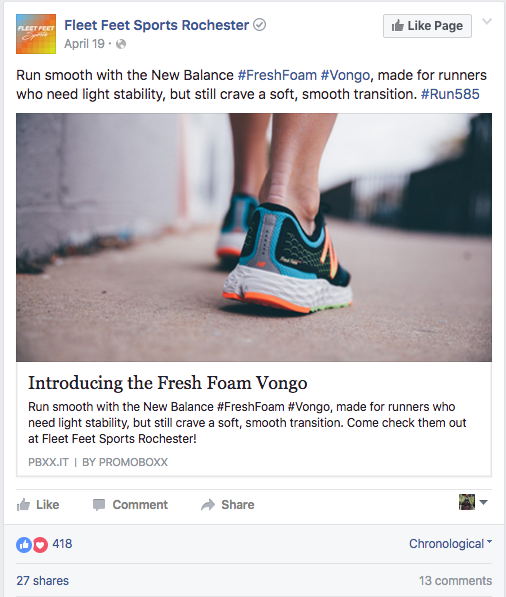

Example co-branded Facebook share
Related content: Promoboxx Doubles Down with New Retailer Experience [Product Update] >
With insights into your retailer network, you can start measuring what content, programs, and campaigns perform best with local audiences. That’s just the start of what you can learn.
By utilizing tools included in the Promoboxx platform like lead generation forms and local advertising programs, you can easily pull consumer data through your local retailers.
Our client, Electrolux, ran two campaigns with different sets of creative through Promoboxx Local Ads without any sort of targeting other than geo-targeting on Facebook. At the end of the campaigns, they were able to see which consumers and demographics were interacting with the ads on a local level (one was younger and more male, the other was older and more female).
Take a look at Electrolux’s Dream Kitchen Sweepstakes campaign, as promoted by their local dealers through Promoboxx:
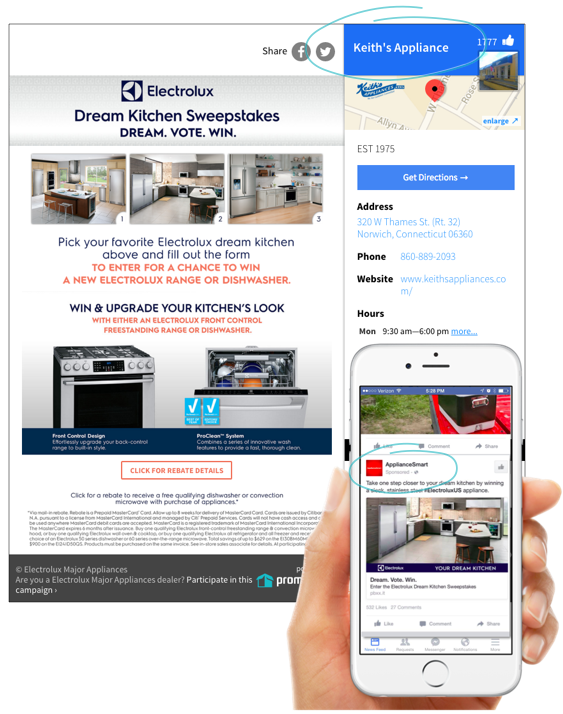

Related content: 3 Reasons Digital Asset Management Platforms Are Failing >
Creating top-down digital marketing alignment from the brand to the sales reps down to the local retail level is no small feat, and there can be many challenges along the way. Retailer data makes it easier.
While sales reps typically have the best access to data (through their delivery of product and close relationships with the retailers), this one-sided approach can leave things disjointed.
[Tweet “Creating top-down digital marketing alignment is no small feat.”]
With a one-stop retailer data resource like Promoboxx that offers brand, rep, and retailer reporting, you can all begin to work smarter, together. Only after this connection from the national level to the local retail level can you move towards top-down marketing alignment.
With Promoboxx, brands like Nissan are able to ensure local message consistency through access to dealer activity feeds, allowing them to see what content their dealers are promoting.
Join leading brands like Nissan, Trek Bikes, New Balance, Electrolux, and SmartWool, who are all accessing powerful data on their retailers through Promoboxx to improve and optimize their marketing campaigns and programs for local success.
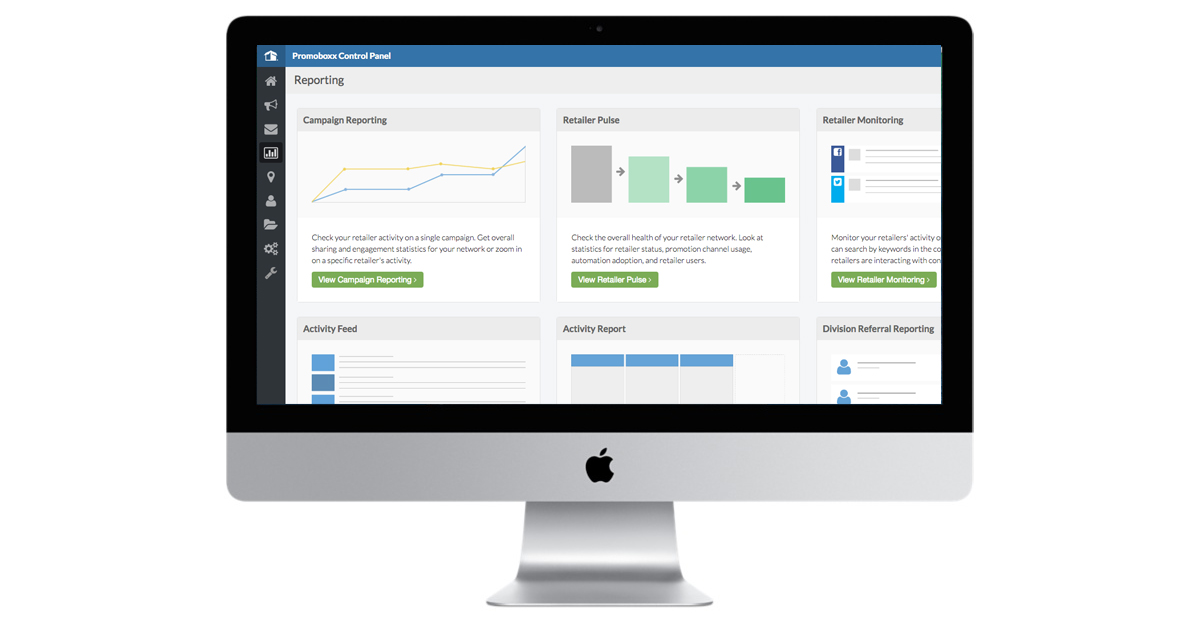

How national brands benefit with Promoboxx:
All of this and more could be yours with just a few simple clicks.
Ensure Awesome: 5 Steps to Kicking Off Successful Brand Initiatives with Retailers >
Promoboxx Doubles Down with New Retailer Experience [Product Update] >
3 Reasons Digital Asset Management Platforms Are Failing Brands & Local Retailers >

